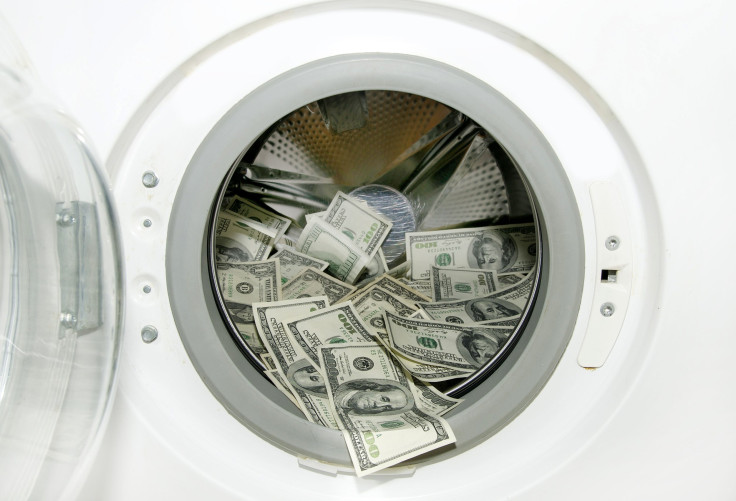Dirty Money: Cash Is Obviously Teeming With Bacteria, But Is Anything Being Done To Clean It?

Money is just about the only thing that people will pick up with their bare hands, no matter its condition or the environment that it’s found in. Imagine seeing a $50 bill on the floor in a rest stop bathroom. It’s been visibly stepped all over, torn, and is now a lovely shade of brown. Chances are that it won’t even last 15 more minutes on the floor, no matter how unappealing it may look. Even though we don’t necessarily get our money off bathroom floors, the amount of germs and pathogens on the average dollar bill would suggest that. Some countries are taking measures to clean their contaminated currency, but just how successful are these techniques in keeping money sterile?
Dirty Money
According to Jane Carlton, lead researcher on the Dirty Money Project at New York University, each dollar bill carries thousands of types of bacteria on its surface. Although most of the bacteria is harmless, some is not. Her project aims to take a closer look at the types of organisms that are living on U.S. paper money with the hope of providing information to health workers that may help them catch disease outbreaks before they spread very far. “We’re not trying to be fear mongers, or suggest that everyone goes out and microwave their money, but I must admit that some of the $1 bills in New York City are really nasty,” Carlton told WYSO. The researcher explained that some of the bacteria found on the money include microbes from the mouth and vagina, and even traces of anthrax. In the United States, bank tellers will accept worn and soiled money, and put them to the side in order to pull them from circulation. However, tellers are allowed to refuse to accept money that is visibly contaminated. Scientists currently are not sure how much of a role money plays in transmitting pathogens and fueling outbreak, but some countries have made efforts to decrease this risk.
Plastic Money
The idea of plastic money was first introduced in Canada in 1996. According to The Telegraph, since then, other countries including, Papau New Guinea, Romania, New Zealand, and Vietnam have also introduced plastic cash. Great Britain announced that after 300 years of cotton-based notes, they will begin their switch to plastic currency beginning in 2016. The plastic bills, which are actually made from a material called plastic polymer film, are advertised as more hygienic than traditional paper bills. A study by the University of Ballarat in Australia found that there were usually fewer bacteria on polymer bills than cotton-based ones. “The thing about a polymer note is that it is not absorbent. There is a cleanliness benefit, which is a health issue,” Philippe Etienne, managing director for a company that manufactures bank-note paper for 23 countries, told The Wall Street Journal. However, a contrasting study found that certain bacteria tended to survive longer on the polymer bank notes than cotton-based ones. The study determined that the polymer structure allowed for the growth and transmission of multi-drug resistant pathogens. However, it also found that cotton-based money was not much better in hygiene.
Money Sterilization
In the mid-1990s in Japan, a company called Hitachi introduced an ATM that would sterilize bank notes. According to Forbes, this was done by heating them to 392 degrees. Although a novel idea, the notes are re-contaminated as soon as they are touched by human hands. Bacteria feed on the oils residue we leave after touching something. Although the oil can be cleaned off with solvents, Forbes also explained that the cleaning process can seriusly damage security features such as holograms and magnetic or fluorescing ink. This is likely to be one of the reasons the Japanese money cleaning ATMs never caught on very well on an international level. A study released last year revealed that scientists have developed a safer money cleaning process which superheats CO2 to 600 degrees at 5,000 PSI. At this level, it behaves both like a gas and liquid and is able to clean notes without damaging their anti-forgery measures. This is not readily available yet, but some hope it will help save billions spent on replacing worn bills by having them cleaned rather than destroyed.
Sources:
Vriesekoop F, Russell C, Alvarez-Mayorga B, et al. Dirty Money: An Investigation into the Hygiene Status of Some of the World’s Currencies as Obtained from Food Outlets. Foodborne Pathogens and Disease. 2010
Gedik H, Voss TA, Voss A. Money and Transmission of bacteria. Antimicrobial Resistance & Infection Control. 2013
Lawandy N, Smik AY. Supercritical Fluid Cleaning of Banknotes. Industrial & Engineering Chemistry Research. 2013.



























